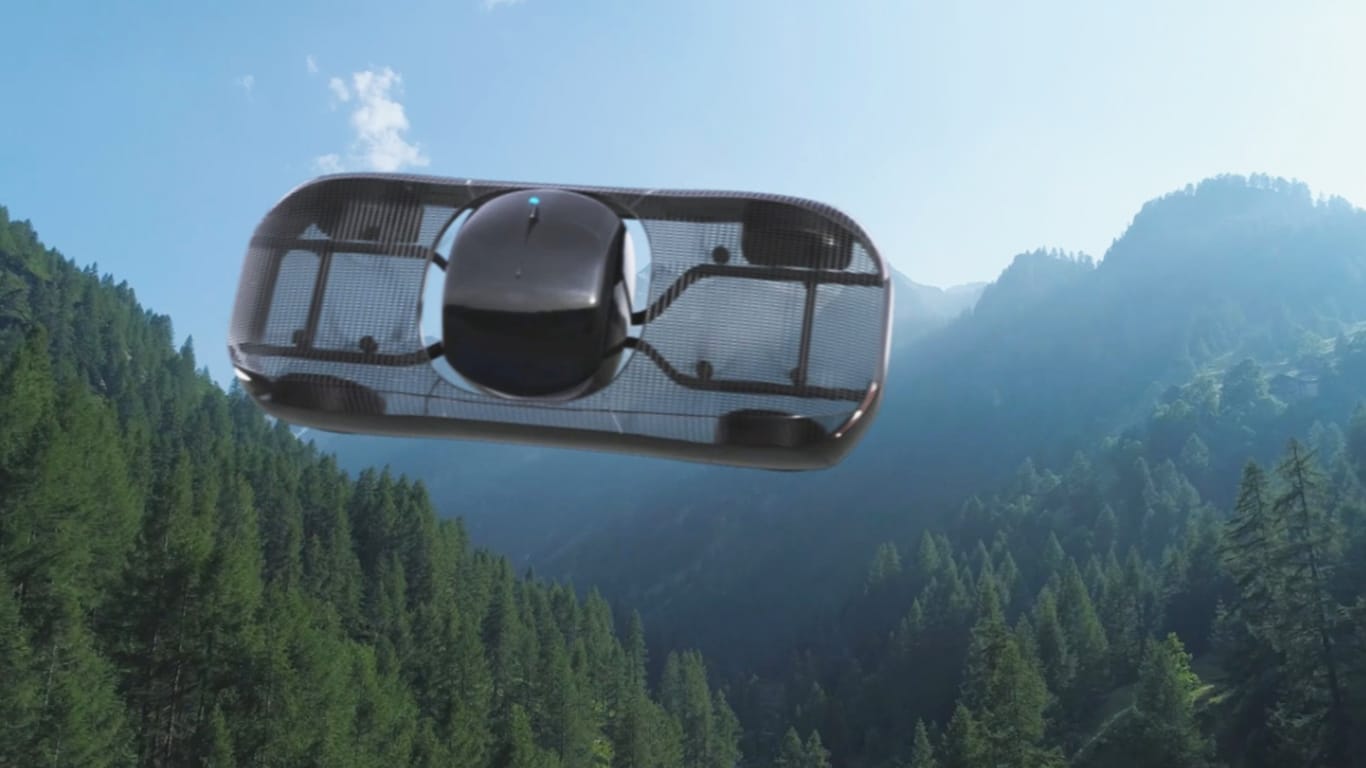Arizona has often been at the forefront of innovative transportation. Waymo, the first commercial driverless vehicle, launched in the Phoenix area in 2018. And now the idea of flying cars may be taking off.
The plan is fueled by $2 million earmarked in the state budget for research and planning, including for infrastructure like vertiports — parking facilities designed for the vertical takeoff and landing of aircraft — across Arizona.
LOCAL NEWS: 10 things you may not know are manufactured in Arizona
INDUSTRY INSIGHTS: Want more news like this? Get our free newsletter here
Arizona state Sen. David Farnsworth, who championed the budget allocation for flying cars, says the state should compete aggressively and position itself as a “magnet for the eventual flying car industry.”
As exciting as all that sounds, there is still a lot about these futuristic flying cars that is, well, up in the air.
Will they look more like the bubble-top cruiser from the 1960s cartoon “The Jetsons,” or the time-traveling DeLorean from the film “Back to the Future”?
How much would they cost?
How will they impact the environment and how will they be regulated?
To get a better understanding of the future of airborne automobiles in the state, ASU News turned to David King, an associate professor in Arizona State University’s School of Geographical Sciences and Urban Planning. King researches the codependence of transportation and land-use planning along with transportation finance and economics.
Note: Answers have been edited for length and/or clarity.

Question: Most of us have no idea what a flying car would look like. Is it closer to a helicopter, a drone or a car with wings?
Answer: Some flying cars look like cars and have wings that fold up for driving. But the vertiports are for what is known as VTOL, or vertical take-off and landing. Many newer firms also call them eVTOL, with the “e” standing for electric.
I have seen prototypes sitting in the manufacturer’s space (and) would describe some of the designs as looking like a helicopter with six or eight small rotors rather than one large one.
The characteristics vary from firm to firm, but the ones that the state is interested in studying are large drones that would be the size of a small car, so, big enough for a couple of people. Some proposals would be somewhat larger than an SUV but then the propellers take up quite a bit more space.
Q: How high or low would they fly? How fast? How would they be regulated?
A: They can go quite high — up to 36,000 feet — and they can be quite fast, traveling up to 300 mph. But how high or how fast they will be allowed to fly is yet to be determined.
Air travel is very regulated, for good reason. The FAA controls airspaces near Sky Harbor, while cities have rules about where helicopters can go.
Some readers may remember the crash between two news helicopters above Indian School Park in 2007. That led to strict rules about how high different helicopter users could go. Police had a certain height, with news copters allowed above that, for instance. These will not be allowed to just fly at whatever height they want.
The airspace regulations are complex and likely will become more so with these new modes of transportation.
Q: Arizona’s state budget has earmarked $2 million for research into “advanced air mobility infrastructure.” How would you describe that infrastructure?
A: VTOLs need what are called vertiports. These are areas where they will take off and land, refuel or recharge, and passengers will gather.
The VTOL technology is such that these vertiports should be more common than airports or helipads. While there are not a lot of examples of vertiports out there, think of them as giant parking lots. Flat, paved surfaces designed for these vehicles.
They will not require a conventional runway, so conceivably there could be buildings surrounding them, but what design considerations are needed to balance safety and convenience is part of the research that is yet to be done.
Q: How could these cars be used?
A: There are many potential uses. … Better drones for delivery? Emergency services? Everyone has their own flying car? I just don’t know, and no one else does.
Like all new technologies, it is hard to know exactly how people will use them. Maybe some people will substitute driving with flying. Maybe rural areas may use them to access hospitals. Or they can be like a small air taxi service flown by professional pilots. That’s more like Blade or Uber Elevate, and that’s very different than replacing your car with one that flies.
I expect that emergency responders and the military may be the first users once they are available, but that’s a guess. If the Phoenix Fire Department is able to use them for rescues in the summer that would be much better for them, for instance, than a crew hiking to someone up a mountain.
They will be more maneuverable than current helicopters; at least, that’s the promise.
Q: Alef Aeronautics in California is now taking preorders for its $300,000 Model A flying car, expected in 2026. Meanwhile, after 30 years of development, Slovakia-based Klein Vision plans to release its two-seat AirCar the same year, priced between $800,000 and $1 million. Do you think flying cars will really be ready for the public that soon?
A: Flying cars are famously always a couple years away. The Moller SkyCar has been three years away ever since I started my PhD 20 years ago. I have a die cast model of one on my desk.
The technology exists to have VTOL — whether electric, diesel or hybrid — now. The safety is still being worked out; helicopters are notoriously unsafe and we won’t tolerate these things falling out of the sky. Making them quiet enough for urban environments is still being worked on. So I don’t know how to predict when these might be available.
Q: What excites you the most about this technology, and what worries you the most?
A: If these are promoted as urban transport, I worry about noise. I know firms say their machines will be quiet and cities are already noisy, but these could be really lousy neighbors, despite industry claims. Cars are already noisy, and prolonged exposure to noise, like a freeway, causes health problems.
Another concern is people may start living even further away, so if these were super popular, maybe there would be some additional sprawl.
I can also see concerns about privacy. We like our private yards here. Do we want people flying overhead and looking at what we’re doing? That’s a bit speculative, but we can think of ways these might bear costs.
There are potential benefits, though. … I’ve already mentioned emergency services. Service times to attend to a traffic crash could decline, potentially saving lives. Getting to people in remote areas could improve. I can see a lot of potential benefits to rural communities, where travel times for health care could improve, for instance.
What we need to examine is if these solutions are better than investing in alternatives. It may be better to invest in rural hospitals than offer better transport service to urban ones. If we add a new mode of urban transport, are flying cars preferred to building better cities? There are trade-offs that need to be explored.




